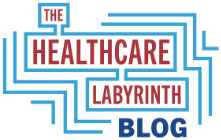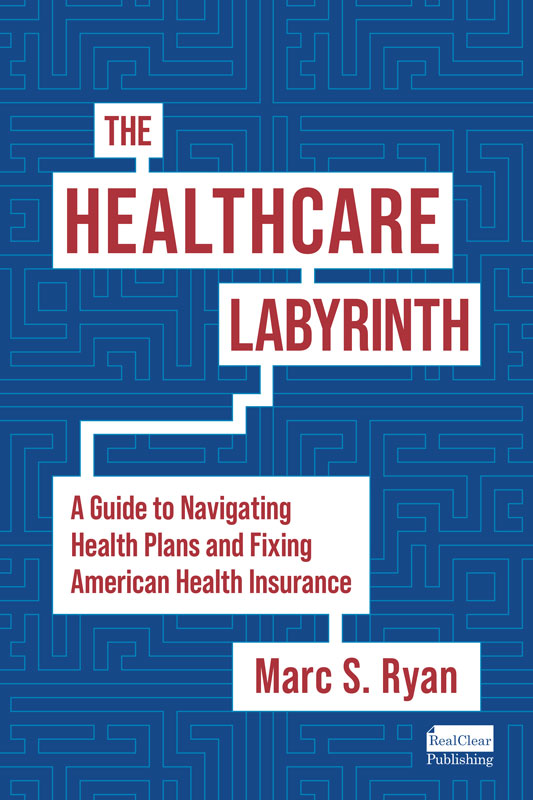The budget bill will mean more turmoil and a steeper climb to financial recovery for health plans
In a number of blogs recently, I have discussed the ongoing financial pain of health plans. I characterized health plan efforts to recover financially as cloudy and rocky going into 2026 and beyond. But I have yet to really layer in the impact of the One Big Beautiful Bill on health plan finances moving forward. To state it clearly, it makes things dramatically worse.
I told you that health plans are already fighting a number of headwinds:
- Utilization coming out of the COVID pandemic has been surging and there does not appear to be any tempering in the near term.
- Costs and utilization of retail, specialty, and medical drugs continue to grow considerably, especially GLP-1 weight-loss drugs.
- Price growth will likely increase in the outyears as well, driven in part by the impact of the budget bill (see below).
- Health plans have seen the ability to leverage prior authorization (PA) curbed nationally and at the state level in all lines of business. This hurts efforts to control medical expense.
- Attention to risk adjustment and quality performance in Medicare Advantage (MA) could lead to more audits and reforms here. This limits revenue upsides.
In general, we have seen annual spending growth trends of 6% to 9% in the past few years. For 2026 and some years beyond, annual trends will hit the lower end of the range, with some lines of business (e.g., employer coverage) seeing costs trends at the high end.
So how will the One Big Beautiful Bill compound the problems? Let’s take this by line of business.
Exchanges
The reconciliation bill significantly pulls back on the ease of enrollment. What’s more, the enhanced premiums subsidies expire at the end of 2025. During the Biden administration we saw surging enrollment, which had the effect of growing overall membership and lowering risk and premiums. In some years, premiums dropped while in most others they inflated reasonably.
But the regulatory changes from the Trump administration and the budget bill will turn back to the pre-Biden era of Trump 45. Enrollment will shrink and risk in the program will rise. Premiums are already slated to increase dramatically in most states. Some major insurers have announced they will exit states or contract footprints. Benefit filings not only have higher premiums but less generous benefits and higher cost-sharing. Plan and provider participation will suffer.
Republicans argue that reforms are meant to stop improper enrollment and fraud. But that does not change the fact that the Biden changes — for good or ill — to government spending, created a stable insurance environment in the Exchanges. We will return to the days of financial instability, rising risk and premiums, and poor access.
The Exchange reductions will have major impact on the recovery efforts of Centene, the nation’s largest Exchange plan. Kaiser, Oscar, Molina, Health Care Service Corporation, UnitedHealthcare and Elevance Health will also be impacted but to a lesser degree. Aetna is leaving the Exchanges in 2026.
Medicaid
Medicaid will see much the same thing. As background, the loss of enrollment during the reintroduction of Medicaid redeterminations post COVID pandemic meant health plans saw rising risk and a mismatch between costs and rates. Extra state Medicaid dollars have dried up and states are having a hard time meeting rate expectations of health plans in Medicaid managed care. This will continue due to major reductions in the budget bill. Work requirements will lead to fewer enrollees. The provider tax limitations, provider tax rate phasedown (from 6% to 3.5%), limits on state directed payments, and eligibility restrictions will mean states have to find other dollars to maintain coverage or cut it along with benefits. This will mean fewer enrollees and skimpier rate hikes.
The Medicaid reductions will have major impact on Medicaid-dominant Centene and Molina (both hit by the Exchange cuts too) as well as Elevance Health, UnitedHealthcare, and CVS Health.
Medicare Advantage
While there were few reductions to MA in the budget bill itself, the fact that the budget deficit increases in each year over the next ten budget years opens up the prospect of PAYGO sequestration. Under law, Medicare can be reduced by 4% per year if sequestration is triggered. In the past, lawmakers have voted to override the mandatory reductions, but Democrats would need to join Republicans in the Senate to meet a 60-vote requirement. Democrats may not be willing to do that, thinking they can brand Republicans for any cuts. PAYGO reductions could be over $40 billion in FFY 2026 and over $500 billion in the budget timeframe.
As we know, MA is financially troubled right now due to poor Star ratings, potential recoupment of risk adjustment monies in 100% audits, prior authorization reforms, and poor planning on executives’ part. PAYGO sequestration could further undermine health plan recoveries in the industry by eating away at rate hikes annually. We saw negative hikes in 2024 and 2025 due to the phase-in of a new risk adjustment model. Sequestration could play a similar role beginning in 2027 and beyond. PAYGO cuts could lead to further geographic and benefit contraction, higher premiums, and increased cost-sharing.
Commercial and employer group
As noted above, commercial and employer coverage are seeing huge surges in utilization and drug spend. This alone creates major complications for employers. While employers have sought to soften the impact on employees’ premiums, more costs have been shifted to employees over time. That trend will continue given utilization spikes.
But the budget bill could make things worse. Providers will lose hundreds of billions in revenue over the next decade from Medicaid and the Exchanges and perhaps Medicare if PAYGO losses are triggered. This will mean providers seek to make up some or all of the losses from commercial and employer rates. Commercial rates are already well above Medicare rates and that could become worse in the next ten years. This could lead to employers further cutting back on benefits and transferring even more costs on to employees in terms of premiums and cost-sharing. Benefits will be reduced as well.
In a separate trend, employers are asking health plan administrators in the ERISA self-insured world to become far more efficient in terms of costs and to drive quality. The budget bill impacts will lead to even more demands from employers and a tougher time on the part of health plans to meet expectations. To save and drive quality, employers will also seek to carve out certain benefits from plans and directly contract with other entities for certain services. Lastly, scrutiny of health plans and related entities financial arrangements will increase.
Conclusion
Overall, margins in the Exchanges, Medicaid, MA, and commercial/employer group could all be heavily impacted by the budget reconciliation bill, which opens up yet more examination of where plans offer benefits, how much they cost, and how much enrollees pay. Get ready for a rough ride.
Some plans have already told investors they will not meet what they outlined to The Street. Look to more plans to re-examine their forecasts and pull guidance in light of the Big Beautiful Bill.
#healthplans #margins #healthcare #coverage #medicare #medicareadvantage #medicaid #managedcare #aca #obamacare #exchanges #commercial #employercoverage
— Marc S. Ryan





